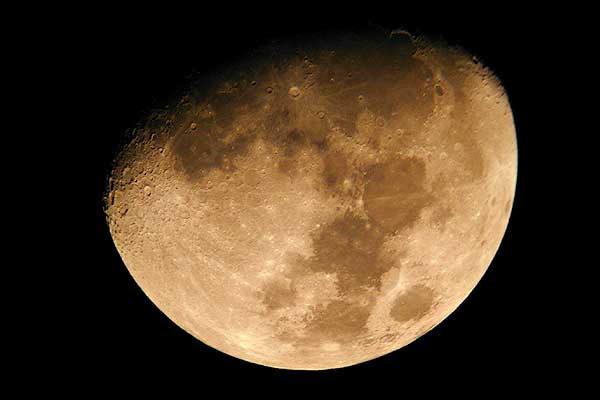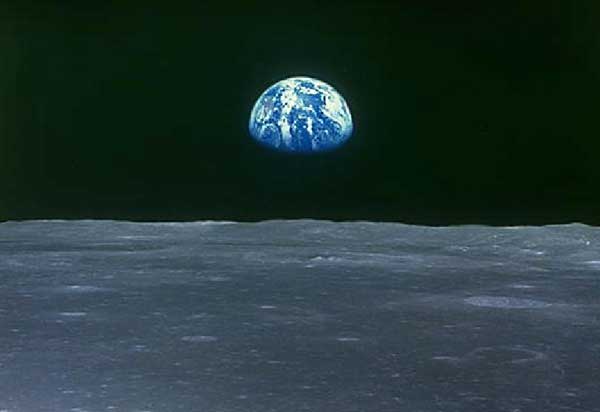
Запуск автоматической станции «Луна-17» с «Луноходам-1» на борту кладет начало новому направлению в исследовании Луны и других небесных тел солнечной системы. До этого в исследовании Луны использовалось фотографирование с космических аппаратов, получение телевизионных изображений и исследование физических характеристик в месте посадки космического аппарата, доставка проб лунного грунта на Землю.

«Луноход-1» установлен на 8-колесном шасси с независимой подвеской колес. Все колеса — ведущие. Это обеспечивает аппарату высокую проходимость в сложных условиях движения по лунной поверхности. Управляется луноход с Земли. Требуется несколько секунд для того, чтобы телевизионный сигнал прошел путь от Луны до Земли, чтобы оператор, управляющий движением, принял решение о том или ином маневре, чтобы закодированная команда проделала обратный путь до Луны, а вся аппаратура успела сработать.
На борту «Лунохода-1» установлена аппаратура для исследования механических свойств лунной поверхности. Информация о свойствах грунта может быть получена и по изображениям лунной поверхности, передаваемым на Землю в процессе движения «Лунохода» — по анализу оставляемых колесами следов и по механике их движения.
Телевизионные изображения, передаваемые на Землю, позволяют также изучать морфологические особенности строения лунной поверхности, что представляет большой самостоятельный научный интерес.
На «Луноходе-1» установлен рентгеновский телескоп для исследования источников рентгеновского излучения. Луна исключительно удобна для таких наблюдений: на ней нет атмосферы, поглощающей рентгеновские лучи, нет магнитного поля, захватывающего заряженные частицы и создающего тем самым радиационный фон, регистрируемый счетчиками рентгеновских лучей. Кроме того, благодаря медленному вращению Луны источник сигналов долгое время находится в поле зрения телескопа — это позволяет получать информацию с высоким разрешением (сигнал от слабого источника накапливается, поэтому легче обнаружить этот источник).
С запуском «Луны-17» связано осуществление еще одного интересного эксперимента: лазерной локации Луны. Этот эксперимент выполнялся по программе советско-французского сотрудничества в области космических исследований. На борту «Лунохода-1» установлен изготовленный французскими специалистами лазерный отражатель весом 3,5 кг и с круговой диаграммой направленности с раскрывом около 6". Проводимое во время лунной ночи облучение этого отражателя лазерным лучом с Земли и прием отраженного сигнала позволяют с высокой точностью измерять расстояние между земной обсерваторией и точкой, в которой находится «Луноход». Эти измерения очень сложны, поскольку из-за дальности расстояния отраженный сигнал получается очень слабым. Проведение точных измерений расстояний Земля-Луна представляет большой интерес для решения многих задач, в частности — для изучения движения Луны, ее орбиты и либраций, для исследования вращения Земли, точнее, возмущений этого вращения и т. д.
Следует отметить совершенство конструкции и надежность работы всех систем «Лунохода-1». Достаточно сказать, что эксперимент продолжался в течение нескольких лунных дней и ночей, а лунные сутки составляют около 28 земных суток! Длительный путь, пройденный самоходным аппаратом, и обширная научная информация, полученная за время его работы на Луне, подтверждают, что использование самоходных аппаратов — весьма перспективное направление космических исследований.
К. Михайлов, кандидат физико-математических наук, 1971 г.
***
The launch of the automatic station Luna-17 with Lunokhod-1 on board marks the beginning of a new direction in the exploration of the Moon and other celestial bodies of the solar system. Before this, the exploration of the Moon was carried out using photography from spacecraft, obtaining television images and studying the physical characteristics of the landing site of the spacecraft, and delivering samples of lunar soil to Earth.
Lunokhod-1 is mounted on an 8-wheel chassis with independent wheel suspension. All wheels are driving. This provides the device with high cross-country ability in difficult conditions of movement on the lunar surface. The lunar rover is controlled from Earth. It takes several seconds for the television signal to travel from the Moon to Earth, for the operator controlling the movement to make a decision on this or that maneuver, for the coded command to travel back to the Moon, and for all the equipment to work.

Lunokhod-1 is equipped with equipment for studying the mechanical properties of the lunar surface. Information about the properties of the soil can also be obtained from images of the lunar surface transmitted to Earth during the movement of Lunokhod - by analyzing the tracks left by the wheels and the mechanics of their movement.
Television images transmitted to Earth also make it possible to study the morphological features of the structure of the lunar surface, which is of great independent scientific interest.
Lunokhod-1 is equipped with an X-ray telescope for studying X-ray sources. The Moon is extremely convenient for such observations: it has no atmosphere that absorbs X-rays, and there is no magnetic field that captures charged particles and thereby creates a radiation background recorded by X-ray counters. In addition, due to the slow rotation of the Moon, the signal source is in the telescope's field of view for a long time - this allows for obtaining high-resolution information (the signal from a weak source accumulates, so it is easier to detect this source). The launch of Luna-17 was associated with the implementation of another interesting experiment: laser ranging of the Moon. This experiment was carried out under the Soviet-French cooperation program in the field of space research. A laser reflector made by French specialists weighing 3.5 kg and with a circular radiation pattern with an aperture of about 6" is installed on board Lunokhod-1. Irradiation of this reflector by a laser beam from Earth during a lunar night and reception of the reflected signal make it possible to measure with high accuracy the distance between an Earth observatory and the point where Lunokhod is located. These measurements are very difficult, since due to the distance, the reflected signal is very weak. Carrying out accurate measurements of the Earth-Moon distances is of great interest for solving many problems, in particular - for studying the motion of the Moon, its orbit and librations, for studying the rotation of the Earth, or more precisely, the disturbances of this rotation, etc.
It should be noted that the perfection of the design and the reliability of all Lunokhod-1 systems. Suffice it to say that the experiment lasted for several lunar days and nights, and a lunar day is about 28 Earth days! The long journey covered by the self-propelled apparatus, and the extensive scientific information obtained during its work on the Moon, confirm that the use of self-propelled vehicles is a very promising direction of space research.
K. Mikhailov, candidate of physical and mathematical sciences, 1971
***